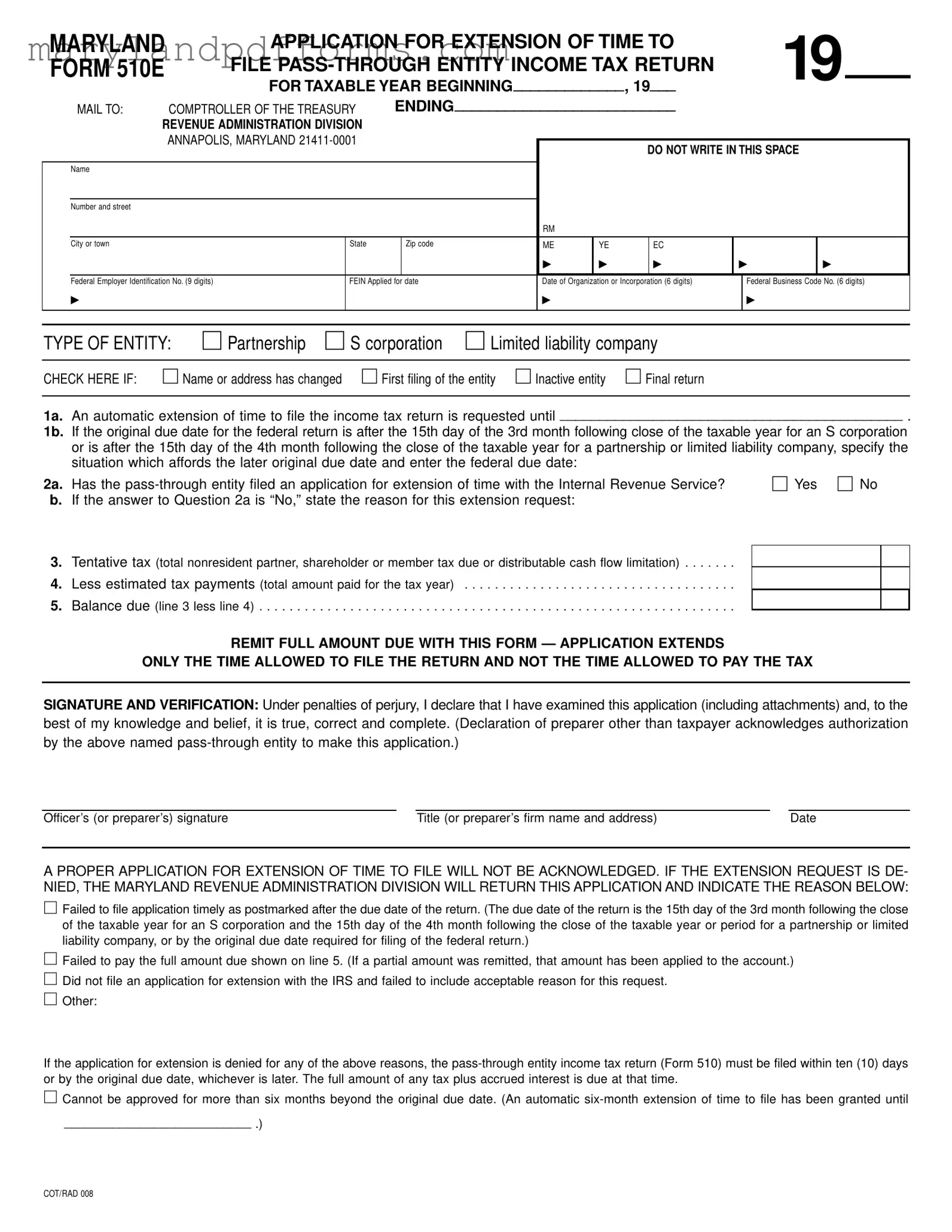The Maryland 510E form is an application used by pass-through entities, such as partnerships, S corporations, and limited liability companies, to request an extension of time to file their income tax return. This form allows these entities to extend their filing deadline while ensuring they comply with state tax laws.
Any pass-through entity that requires additional time to file their income tax return must file the Maryland 510E form. This includes partnerships, S corporations, and limited liability companies operating in Maryland.
The Maryland 510E form is due by the 15th day of the 3rd month following the close of the taxable year for S corporations. For partnerships and limited liability companies, it is due by the 15th day of the 4th month following the close of their taxable year.
How long does the extension last?
An automatic extension of six months is granted for S corporations and three months for partnerships and limited liability companies. However, this extension only applies to the filing of the return and does not extend the time to pay any taxes owed.
If you miss the deadline, the extension request may be denied. In this case, the pass-through entity must file the income tax return within ten days of receiving notification of the denial or by the original due date, whichever is later.
You will need to provide the following information:
-
The name and address of the pass-through entity
-
The Federal Employer Identification Number (FEIN)
-
The type of entity (partnership, S corporation, or LLC)
-
The taxable year dates
-
The tentative tax amount
-
Any estimated tax payments made
Yes, you must remit the full amount due with the form. The application extends only the time allowed to file the return, not the time allowed to pay any taxes owed. Failure to pay the full amount may result in penalties and interest.
What happens if my extension request is denied?
If your request is denied, the Maryland Revenue Administration Division will notify you. You will then need to file your income tax return within ten days or by the original due date, whichever is later. Any tax due, plus accrued interest, will need to be paid at that time.
Can I get an additional extension?
Yes, a partnership or limited liability company may request an additional three-month extension for reasonable cause by filing another Maryland 510E form. However, this is not automatically granted and must be justified.
The completed form should be mailed to the Comptroller of the Treasury, Revenue Administration Division, Annapolis, Maryland 21411-0001. Ensure you use the envelope provided in the tax booklet and mark it appropriately.
